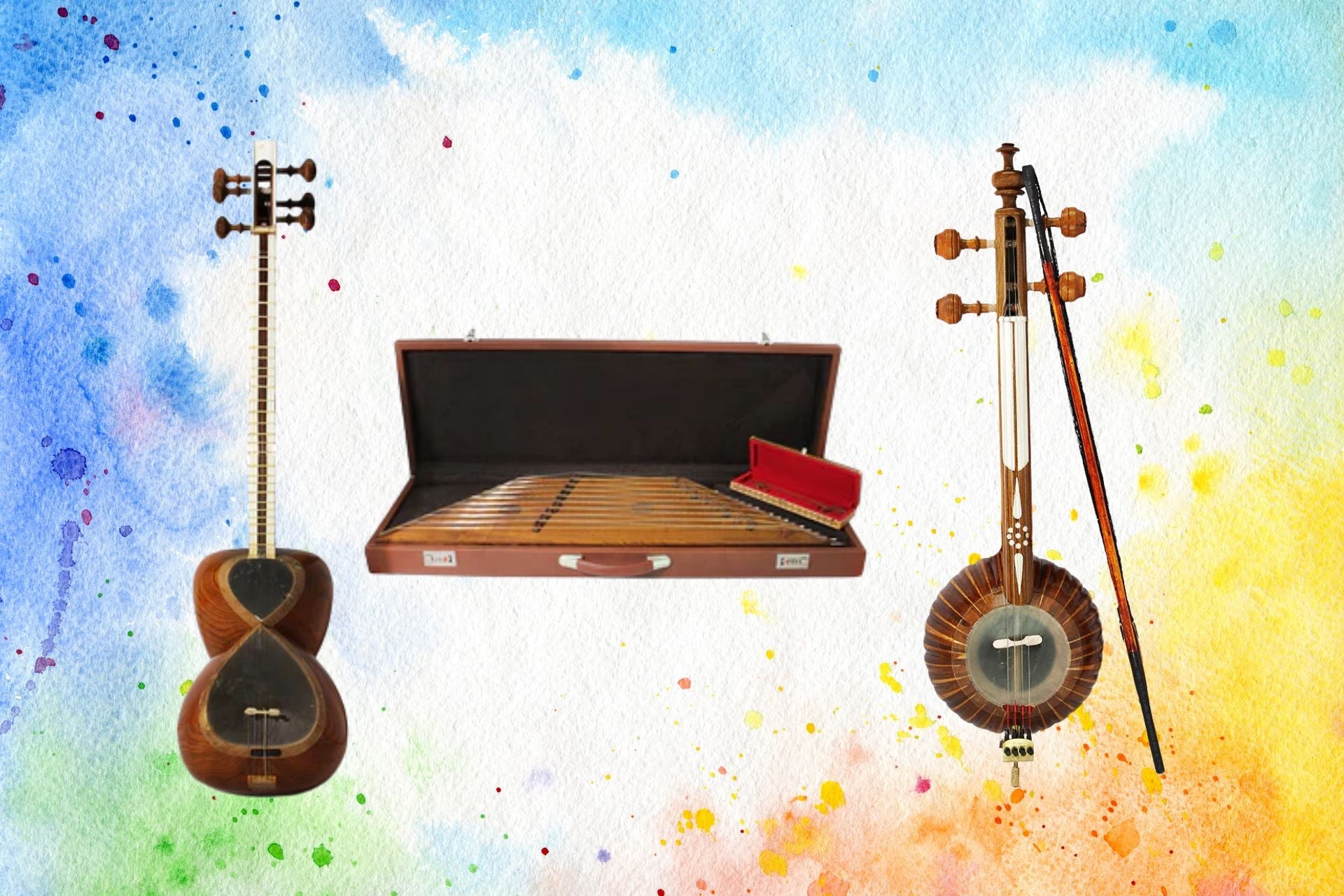General Articles
Top 3 Persian Traditional Instruments That Define Iranian Music
Introduction to Persian Traditional Instruments
Persian traditional music, with its rich cultural heritage and centuries-old history, is deeply intertwined with the identity and soul of Iran. It is characterized by intricate rhythms, deep emotion, and improvisational techniques that have been passed down through generations. Central to this art form are the instruments used to perform it. These instruments are not only tools for music but also symbols of Iranian culture, tradition, and expression. Among the many, three Persian traditional instruments stand out for their popularity, distinctive sound, and cultural significance: the Tar, the Santur, and the Kamancheh.
The Tar: The Heartbeat of Persian Classical Music
The Tar is perhaps the most iconic of Persian instruments and plays a vital role in both solo and ensemble performances of traditional Iranian music. The name “Tar” means “string” in Persian, and the instrument lives up to this name with its double-bowl body and long neck strung with six strings.
The body of the Tar is typically made from mulberry wood and is covered with a thin membrane made from lambskin, which acts as a resonator. Its deep, rich tone gives Persian classical music its unique warmth and emotional depth. The frets on the Tar are movable, which allows musicians to access microtones, an essential aspect of Persian musical scales (Dastgah system). This flexibility makes the Tar exceptionally expressive and capable of conveying a wide range of emotions.
Throughout history, the Tar has been the favoured instrument of master musicians and composers, who use it to perform intricate melodies and improvisations. It is especially prominent in the Radif, the classical repertoire of Persian music. The Radif is an oral tradition that has been passed down over centuries, and the Tar is often the instrument of choice for preserving and performing it.
Modern Tar players continue to innovate while respecting traditional techniques. The instrument is also taught in conservatories and music schools in Iran and around the world, helping to ensure its survival for future generations. Whether used in a solo performance or as part of an ensemble, the Tar remains the heartbeat of Persian classical music.
The Santur: The Hammered Beauty of Persian Sound
The Santur is a hammered dulcimer and is one of the oldest known Persian instruments, dating back over 2,500 years. It is trapezoidal in shape and consists of a wooden box with numerous strings stretched across it. The musician uses lightweight wooden mallets called “mezrab” to strike the strings, producing a shimmering, bell-like sound that is both delicate and mesmerizing.
Typically, a Persian Santur has 72 strings arranged in groups of four, and it is played using a combination of rhythmic precision and melodic fluidity. Each string group is tuned to a specific pitch, and the player must navigate the layout with both skill and intuition. The instrument is tuned according to the Dastgah system, enabling the performer to access a wide variety of Persian musical modes.
The Santur is known for its versatility and ability to express both fast-paced rhythmic patterns and slow, emotional passages. Its bright, resonant tone can create an atmosphere of ethereal beauty, making it a favourite for both solo performances and accompaniment in Persian music ensembles.
In recent years, the Santur has been adapted to other musical traditions as well. It has found its way into fusion genres, world music, and even orchestral compositions, thanks to its unique tonal character. However, its roots remain firmly in Persian traditional music, where it continues to inspire both musicians and listeners alike.
The Kamancheh: The Persian Bowed Elegance
The Kamancheh, often referred to as the “Persian spike fiddle,” is a bowed string instrument with a history stretching back over a thousand years. Its name means “little bow” in Persian, and it is considered the ancestor of many modern bowed instruments, including the violin. The Kamancheh is known for its expressive, vocal-like sound and its ability to mimic the nuances of the human voice.
This instrument features a small, round body made from mulberry wood, covered with a thin animal-skin membrane. It has a long neck and typically four strings, although historical variations may have had three. The Kamancheh is played upright, resting on a spike at its base, and bowed with a curved bow made from horsehair.
What sets the Kamancheh apart is its dynamic range and tonal depth. It can transition effortlessly from hauntingly soft melodies to powerful, emotional expressions. Its role in Persian music is similar to that of the violin in Western music, capable of leading the ensemble or blending harmoniously with other instruments.
The Kamancheh is an essential instrument in Persian classical and folk music traditions. It is often featured in performances of the Radif and is capable of performing the complex ornamentations and modulations that define Persian musical aesthetics. Like the Tar and Santur, the Kamancheh relies heavily on the musician’s ability to improvise within traditional structures, making each performance a unique and deeply personal expression.
In contemporary settings, the Kamancheh continues to evolve. It is frequently used in cross-cultural collaborations and modern compositions, reflecting its enduring appeal and adaptability. Many Iranian virtuosos, such as Kayhan Kalhor, have brought the Kamancheh to international audiences, showcasing its beauty and sophistication to the world.
The Importance of Preserving Persian Musical Heritage
These three instruments, the Tar, Santur, and Kamancheh, form the core of Persian traditional music and represent the depth, complexity, and emotional power of Iran’s musical heritage. They are not merely tools for sound but vehicles for storytelling, cultural identity, and artistic expression. Each instrument carries centuries of history, and playing them requires not only technical skill but a deep understanding of the traditions they embody.
Preserving and promoting these instruments is crucial for keeping Persian music alive for future generations. This involves not only performing and teaching the instruments but also building them using traditional methods, composing new works within the classical framework, and supporting young musicians who want to explore this rich musical tradition.
Music shops, cultural organizations, and educational institutions all play a role in sustaining interest in Persian traditional music. Access to high-quality instruments, proper instruction, and performance opportunities is essential to maintaining the vitality of this art form.
Final Thoughts
Persian traditional music continues to captivate audiences around the world, and its beauty is inseparable from the instruments that bring it to life. The Tar, with its deep, resonant tone; the Santur, with its delicate, hammered sound; and the Kamancheh, with its emotive, bowed expression, each one tells a story of Iran’s rich musical past and vibrant cultural spirit. Whether you are a musician, a student of music, or simply a lover of cultural traditions, these instruments offer a gateway to the timeless beauty of Persian music.
Looking to begin your journey into Persian traditional music? Visit Rhythm Music Shop for a wide selection of musical instruments and accessories. We serve musicians online and in-store across Markham, Richmond Hill, North York, Scarborough, and the rest of the GTA. Discover quality, tradition, and passion all in one place.

